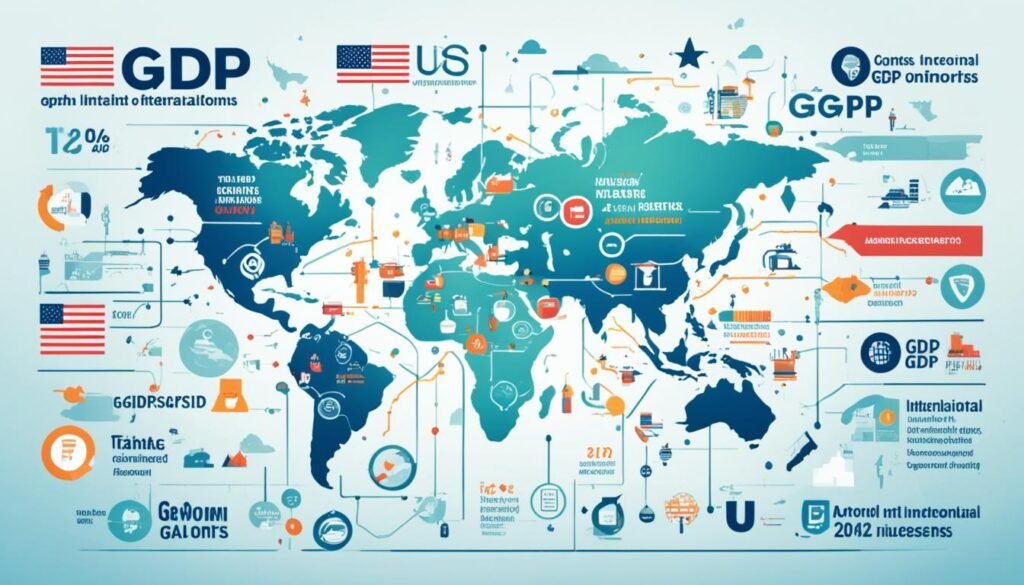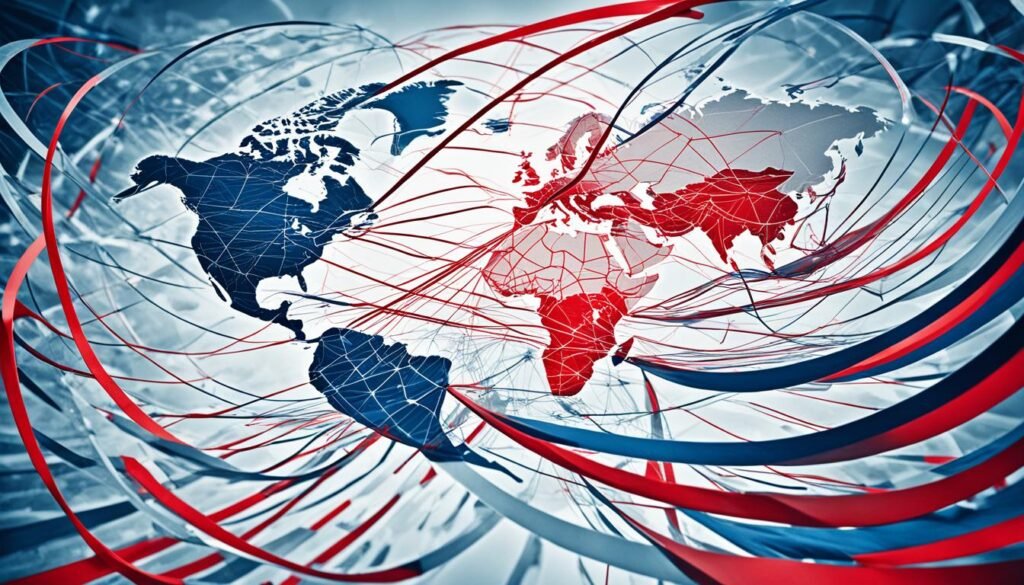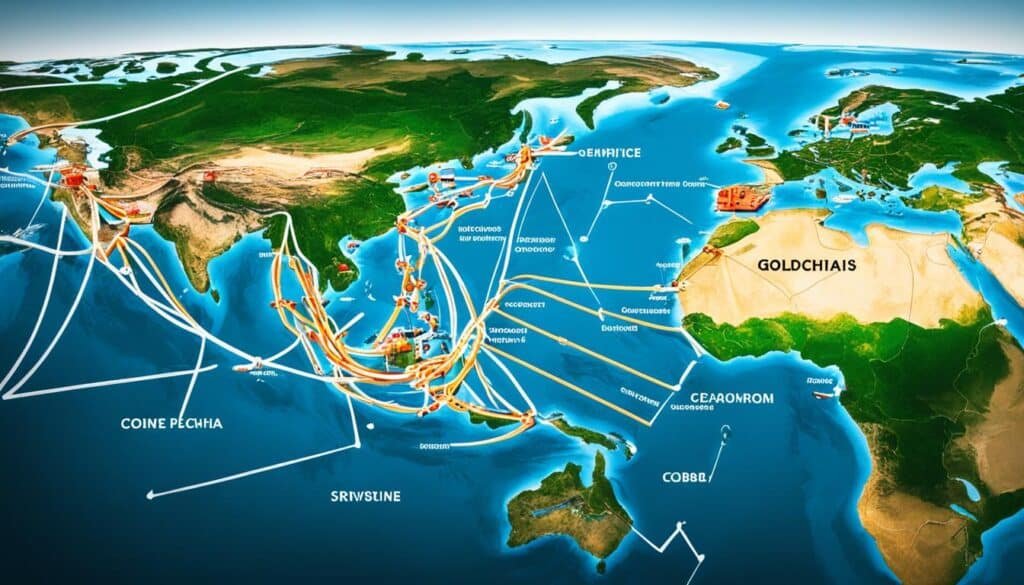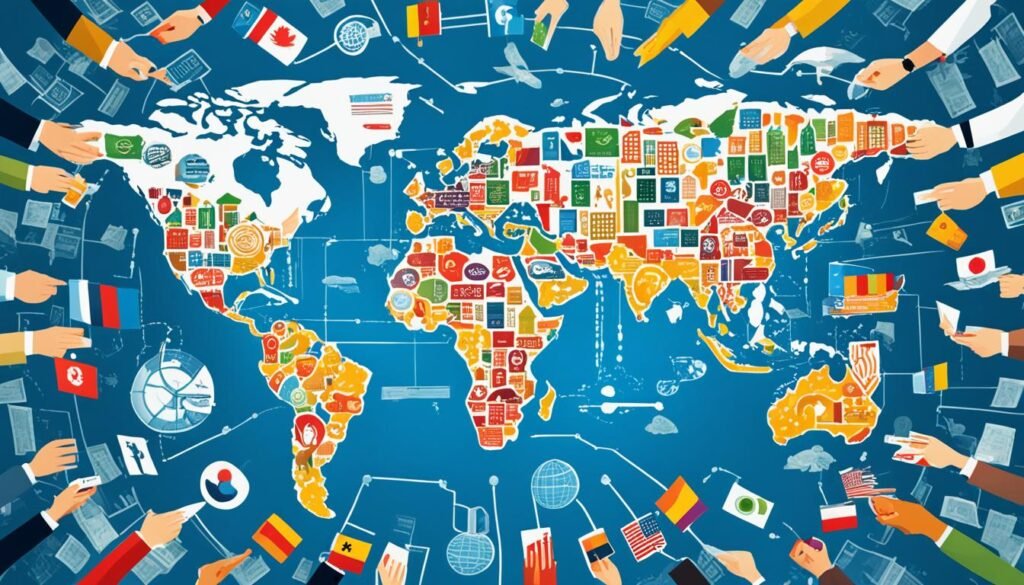The global economy is in a state of constant evolution, marked by increasing interconnectedness and the growing significance of international finance. Christine Lagarde, the Managing Director of the International Monetary Fund (IMF), provides valuable insights into the current state of the world economy, highlighting the critical role of the United States and the importance of the IMF in this increasingly interconnected landscape.
Lagarde notes that while global growth remains subdued, the story is more complex, with advanced economies, such as the United States, recovering, while emerging markets are experiencing a slowdown. She emphasizes the rapid acceleration of financial integration and the importance of trade and capital flow spillovers, underscoring the increasing economic interconnectedness that has defined the modern era.
The strengthening U.S. recovery is seen as good news, not only for the American economy but also for the global economy as a whole. Lagarde highlights the gradual improvement in the fundamentals of the U.S. economy, with households in better shape, the housing sector looking brighter, and the private sector proving to be the primary driver of growth and job creation. However, she emphasizes that the issue of jobs remains paramount, and policymakers have a crucial responsibility to help shape an environment that fosters business and citizen prosperity.
Lagarde’s insights underscore the importance of international finance in navigating the complex and interconnected world economy. As the global financial landscape continues to evolve, understanding the dynamics of international trade, monetary policy, and financial institutions will be essential for policymakers, businesses, and investors alike.
Key Takeaways
- The global economy is marked by increasing interconnectedness, with flows of goods, services, capital, people, data, and ideas driving global value chains and prosperity.
- While global growth remains subdued, the story is more complex, with advanced economies, such as the United States, recovering, and emerging markets experiencing a slowdown.
- The strengthening U.S. recovery is seen as good news for the American economy and the world, but the issue of jobs remains paramount.
- Policymakers have a crucial responsibility to help shape an environment that fosters business and citizen prosperity, addressing public finances, monetary policy, and financial sector reform.
- Understanding the dynamics of international trade, monetary policy, and financial institutions will be essential for navigating the complex and interconnected world economy.
The Globalized Economy Today
The global economy is facing a challenging and ever-evolving environment, with global growth remaining subdued. However, the story is more complex, as the world is seeing diverging growth patterns, with advanced economies recovering and emerging markets slowing. The advanced economies, such as the United States, Euro Area, and Japan, are showing signs of recovery, but growth remains below desired levels. Emerging market countries, which helped keep the global economy afloat during the crisis, are now experiencing a slowdown in their momentum, reflecting the need to address domestic imbalances.
Subdued yet Complex Global Growth
The global economy is facing a challenging and changing environment, with global growth remaining subdued. However, the story is more complex, as the world is seeing diverging growth patterns, with advanced economies recovering and emerging markets slowing.
Advanced Economies Recovering, Emerging Markets Slowing
The advanced economies, such as the United States, Euro Area, and Japan, are showing signs of recovery, but growth remains below desired levels. Emerging market countries, which helped keep the global economy afloat during the crisis, are now experiencing a slowdown in their momentum, reflecting the need to address domestic imbalances.
Increasing Economic Interconnectedness
Christine Lagarde, the Managing Director of the International Monetary Fund, emphasizes the increasing economic interconnectedness, with rapid acceleration of financial integration and the significance of trade and capital flow spillovers.
Role of the United States

Christine Lagarde, the Managing Director of the International Monetary Fund (IMF), highlights the critical importance of the United States in the global economy. She notes that the strengthening recovery in the U.S. economy is good news not just for America, but for the world as a whole. While U.S. economic growth is expected to be more modest this year, Lagarde anticipates a significant acceleration in the year ahead.
Strengthening Recovery
The fundamentals of the U.S. economy have been gradually improving, with households in better shape, the housing sector showing signs of brightness, and the private sector proving to be the primary engine of growth and job creation. This gradual strengthening of the U.S. economic recovery is a positive development, not only for the U.S. economic outlook but also for the global economy as a whole.
Improving Economic Fundamentals
Lagarde notes that while the U.S. economic performance has been mixed, the U.S. economic fundamentals have been steadily improving. Households are in a stronger financial position, the housing market is showing signs of improvement, and the private sector is emerging as the driving force behind growth and job creation in the U.S. economy.
Policy Recommendations for Growth and Jobs
However, Lagarde emphasizes that the issue of jobs remains paramount, and policymakers have an important responsibility to help shape the environment for businesses and citizens to thrive. She provides policy recommendations for the U.S., including fixing public finances, appropriately calibrating monetary policy, and completing the reform of the financial sector to support U.S. economic growth and job creation.
Importance of International Finance

The rapid globalization of the world economy has increased the interconnectedness among financial markets and businesses around the globe. This has led to a proliferation of investment opportunities for investors seeking to diversify their portfolios and capitalize on growth opportunities in different regions. Companies can now source materials and labor globally, which has significantly increased their competitiveness in the international arena.
The increased financial globalization has facilitated international investing, as investors can now more easily access shares of internationally-based companies through various investment vehicles such as stocks, mutual funds, ETFs, and ADRs. This expanded access to global capital markets has been a driving force in the transformation of developing economies into modern, industrialized nations, as the influx of international investments helps to support economic growth and development.
The international finance landscape has evolved significantly, with the global financial system becoming increasingly interconnected and complex. Financial institutions, regulations, risk management, and financial data and models all play a critical role in facilitating cross-border transactions and financial cooperation within the financial services industry. As the world becomes more financially integrated, understanding the dynamics of international finance and managing financial risks have become essential for businesses and investors to maintain a competitive edge in the global marketplace.
The financial technology (fintech) revolution has further enhanced the accessibility and efficiency of international finance, enabling greater financial inclusion and financial education around the world. As the global financial landscape continues to evolve, the importance of international finance in shaping the economic development and competitiveness of nations and businesses will only continue to grow.
Global Value Chains and Trade Flows

Global value chains have been built on the flows of goods, services, capital, people, data, and ideas, creating a more prosperous world. However, the composition of these flows has been shifting, with intangibles, services, and talent growing faster than goods trade. Despite the disruption caused by the COVID-19 pandemic, most global flows continued to grow or even accelerated in 2020 and 2021, with the resilience of intangibles, trade, and capital flows being essential to navigating the turmoil.
Shifting Flows: Intangibles, Services, and Talent
The global economy has witnessed a gradual shift in the composition of trade flows, with intangible assets, services, and talent becoming increasingly important. As businesses seek to enhance their global competitiveness, they are leveraging the flow of ideas, knowledge, and specialized skills across borders to drive innovation, productivity, and growth. This shift reflects the rising importance of the digital economy, knowledge-intensive industries, and global talent mobility.
Resilience During the Pandemic
Despite the disruptions caused by the COVID-19 pandemic, most global flows continued to grow or even accelerated in 2020 and 2021. The resilience of intangible flows, trade, and capital flows played a crucial role in navigating the turmoil, as businesses and economies adapted to the new realities. This underscores the importance of supply chain resilience, trade diversification, and global interconnectedness in weathering unexpected shocks.
Regional Interdependencies
The world remains deeply interconnected, with regions and countries depending on each other for various resources, goods, and services. This creates a web of regional interdependencies that shape the global economy. Understanding these interdependencies is essential for businesses and policymakers to effectively manage supply chain risks, trade disruptions, and regional economic dynamics.
Risks of Concentration

The rise of global value chains has brought significant economic benefits, but it has also created new risks in the form of supply chain concentration. While global interconnectedness has enabled greater efficiencies and access to resources, it has also made certain industries and regions overly reliant on a limited number of sources for critical products and materials.
Global Concentration Hotspots
Recent research has identified that products whose origins are concentrated in only a few geographies are found across every sector and region, accounting for a small yet important share of global trade. For instance, China exports a majority of the most concentrated products in the electronics and textiles industries, while the Asia-Pacific region contributes disproportionately to exports of concentrated minerals. Similarly, Latin America and North America account for the majority of the most concentrated agricultural products.
Country and Company Dependencies
Beyond these global hotspots, some countries and companies have become overly dependent on only a few sources, even for products that are widely available around the world. This global concentration and supply chain concentration can make these entities vulnerable to disruptions, such as natural disasters, political instability, or sudden shifts in trade policies. The concentration risks posed by this over-reliance on limited sources can have cascading effects, threatening supply chain resilience and the overall stability of the global economy.
To mitigate these risks, companies and policymakers must explore strategies for global diversification and supply chain resilience, reducing their dependencies on concentrated sources of production, resources, and trade. By fostering greater geographical concentration, industry concentration, and product concentration, they can build a more robust and adaptable global system that is better equipped to withstand future shocks and disruptions.
Dynamics of Global Value Chains

The global value chain landscape has long been a dynamic and evolving one, marked by gradual shifts in its composition over time. Prior to 2008, the trajectory of global value chain dynamics was largely uniform, characterized by a steady move towards less concentration and greater interregional trade as trade liberalization and technological advancements facilitated the emergence of truly global value chains.
Gradual Historical Shifts
Over the years, global value chains have undergone a process of transformation and integration, with the composition of trade flows and production networks gradually shifting. This evolution has seen a reduction in fragmentation and an increase in regionalization and diversification of global value chains, as companies sought to enhance their resilience and flexibility in the face of changing market dynamics and supply chain challenges.
Diverging Patterns Post-2008
However, the landscape has shifted significantly since the global financial crisis of 2008. In the post-2008 era, the patterns of trade flows and global value chain dynamics have begun to diverge, with approximately 40% of trade flows associated with global value chains demonstrating increased regionalization and diversification. This shift reflects the evolving strategies and priorities of companies and policymakers as they navigate the complexities of the modern global economy, seeking to optimize performance, competitiveness, and sustainability within their value chain structures.
International Finance and Investing

Globalization has increased interconnectedness among international finance, global financial markets, and businesses around the world, leading to a wealth of investment opportunities for investors. Investors can now more easily access shares of internationally-based companies through a variety of investment vehicles, allowing them to diversify their portfolios and profit from the growing global markets.
Access to Global Markets
Investors today have access to a wide range of global investment opportunities, including stocks, mutual funds, exchange-traded funds (ETFs), and global depositary receipts (GDRs). These investment vehicles provide exposure to international equity markets, global bond markets, and even alternative asset classes like global real estate, private equity, venture capital, and hedge funds. This global portfolio diversification allows investors to capture growth from various international finance and investment markets.
Investment Vehicles
From traditional stocks and mutual funds to more specialized investment products, the international finance landscape offers investors a diverse array of options to build a global portfolio. Stocks of internationally-based companies can be accessed directly or through international ETFs and mutual funds, which provide broad exposure to global equity markets. Investors can also explore global bond markets, real estate, alternative investments, and more through dedicated investment vehicles. The increased availability of these international investment vehicles has made it easier than ever for investors to participate in the growth of the global economy.
Navigating the complexities of international finance and investing requires a thorough understanding of the various regulations, reporting standards, and research resources available. Investors should educate themselves on the nuances of international financial markets, global investment opportunities, and the latest trends in global asset management to make informed decisions and diversify their portfolios accordingly.
Impacts of Globalization

Globalization has resulted in greater interconnectedness among markets around the world, leading to increased economic opportunities, social transformation, and economic integration. This heightened integration has unlocked new avenues for economic development, economic growth, and economic diversification across the globe.
Economic Opportunities
The increased economic globalization has facilitated the availability of products and services in new markets, which were previously confined within national boundaries. This has led to improved household incomes and economic opportunities for workers in different economies. Companies have also benefited from the ability to source materials and labor globally, enhancing their competitiveness and driving economic interdependence.
Social and Economic Transformation
Alongside the economic impacts, globalization has also spurred social transformation, cultural transformation, and political transformation worldwide. The flow of ideas, information, and talent has accelerated technological transformation, fostering innovation and progress. This multifaceted transformation has reshaped societies, economies, and global interactions, leading to both global economic integration and global economic competition.
While these changes have created numerous economic opportunities, they have also contributed to global economic inequality and sustainability challenges that policymakers must address to ensure global economic cooperation and global economic sustainability.
Maintaining Competitiveness

Globalization has compelled connected economies to continue to invest in each other to protect their economic health and acquire new profits. International investments have increased as a direct result of globalization and continue to do so, as companies seek to maintain competitiveness by accessing new markets, sourcing materials and labor globally, and keeping pace with their international counterparts.
In this rapidly evolving global competitive landscape, organizations must develop competitive strategies that leverage their competitive advantages and competitive positioning to thrive. This may involve competitive innovation, competitive pricing tactics, and competitive diversification to meet the competitive pressures and competitive dynamics of the international marketplace.
Alongside these competitive strategies, companies must also invest in competitive talent, competitive technology, and competitive infrastructure to bolster their competitive resilience and competitive sustainability over the long term. Effective competitive intelligence and competitive benchmarking can further inform these efforts, helping organizations navigate the complex competitive regulations and competitive policies that shape the global business environment.
| Competitive Strategy | Key Considerations |
|---|---|
| Competitive Advantage | Identifying and leveraging unique capabilities, resources, or market positions to outperform rivals |
| Competitive Positioning | Strategically aligning product/service offerings, pricing, and branding to appeal to target customers |
| Competitive Innovation | Developing new products, services, or business models to stay ahead of the competition |
| Competitive Diversification | Expanding into new markets, products, or services to reduce reliance on a single revenue stream |
| Competitive Resilience | Building organizational agility and adaptability to navigate dynamic competitive landscapes |
Also Read: Public Finance Policies: Strategies For Economic Growth And Stability
Conclusion
The global economy is increasingly interconnected, with flows of goods, services, capital, people, data, and ideas driving prosperity through robust global value chains. However, this interconnectedness also brings inherent risks, such as the concerning concentration of production and resources in a few regions or countries, making supply chains vulnerable to potential disruptions.
As the international finance landscape continues to evolve, maintaining global competitiveness and fostering economic interdependence will be crucial for navigating the global economy and its transformative impacts. Policymakers must address global risks and promote global resilience through strategic policy recommendations that support the dynamic global value chains and facilitate international investment opportunities.
In an era of heightened globalization, the interconnected nature of the world economy presents both immense opportunities and challenging complexities. By understanding and effectively managing these dynamics, nations and businesses can harness the power of international finance to drive sustainable economic transformation and prosperity in the years to come.
FAQs
Q: What is globalization and how does it impact international finance?
A: Globalization refers to the process of increased interconnectedness and interdependence among countries. It impacts international finance by influencing factors such as trade, investment, and capital flows across borders.
Q: What are financial services in the context of international finance?
A: Financial services include a wide range of services such as banking, insurance, investment management, and financial planning that facilitate financial transactions and support economic activities on a global scale.
Q: What is the role of the International Finance Corporation (IFC) in the world economy?
A: The International Finance Corporation (IFC) is a member of the World Bank Group that focuses on providing financial services and investment to private sector projects in developing countries to promote sustainable development and reduce poverty.
Q: How do financial institutions contribute to international finance?
A: Financial institutions play a crucial role in international finance by providing services such as facilitating trade finance, offering foreign exchange services, and investing in global markets to support economic activities and growth.
Q: What are some recent issues in global trade that have impacted international finance?
A: Recent issues in global trade include trade conflicts between major economies, disruptions in supply chains due to the COVID-19 pandemic, and shifts in trade policies and regulations that have influenced international finance dynamics.
Q: What is the significance of exchange rates in international finance?
A: Exchange rates determine the value of one currency in relation to another and play a crucial role in international trade, investment decisions, and capital flows. Fluctuations in exchange rates can impact the profitability of businesses operating in global markets.
Q: How do central banks influence international finance through monetary policy?
A: Central banks use monetary policy tools such as interest rates and open market operations to influence factors such as money supply, inflation, and economic growth, which in turn impact international finance dynamics and exchange rates.
Q: What are some key concepts in international finance theory and policy?
A: Key concepts in international finance theory and policy include purchasing power parity, interest rate parity, balance of payments, foreign exchange markets, and macroeconomic theories that analyze the interactions between different economic variables on a global scale.
Source Links
- https://www.mckinsey.com/capabilities/strategy-and-corporate-finance/our-insights/global-flows-the-ties-that-bind-in-an-interconnected-world
- https://www.imf.org/en/News/Articles/2015/09/28/04/53/sp091913
- https://www.investopedia.com/ask/answers/022615/what-effect-has-globalization-had-international-investments.asp





